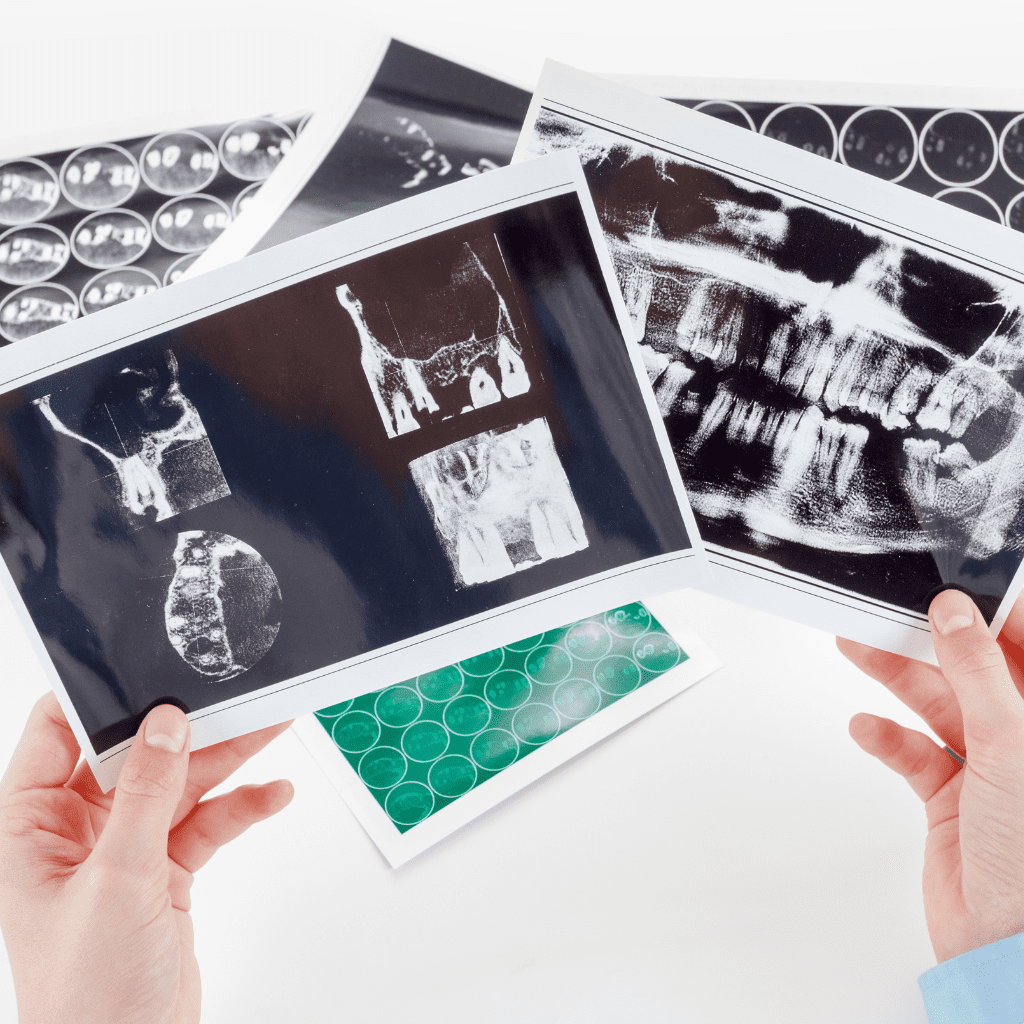Everything You Need To Know About Dental X-Rays
One of the routine things that happen at a typical dental visit is dental x-rays. You hop into the chair with the heavy apron on and try to sit still, but have you ever pondered the purpose of those x-rays?
Your dentist may share with you when they see a cavity forming or a concern in your root or tooth structure, but most of us don’t give it a second thought. It may surprise you to know that the different types of x-rays can provide your dentist with a plethora of information.

Why does your dentist take x-rays?
Dental x-rays, or radiographs, provide your dentist with detailed insight into how your teeth and gums are doing. It’s important to catch developing concerns as early as possible to avoid the need for more invasive and costly treatments down the road. A dental x-ray will inform your dentist if you have bone destruction, dental injuries or tooth decay.
Types of x-rays
Your dentist will select different types of x-rays depending on the concerns they may suspect. Routine x-rays typically include bitewing and panoramic, but your dentist may consider all 4 of these x-ray options depending on the circumstances:
- Bitewing: Provides a picture of both the lower and upper posterior teeth. This X-ray can also show your dentist how your teeth touch one another and any issues your bite and alignment may be causing.
- Panoramic: Gives a thorough view of the teeth, jaws, nasal area, sinuses and jaw joints. It is very helpful for your dentist to have a baseline on what each of these areas looks like so they can monitor changes or concerns that may present themselves. It is also commonly used when diagnosing the need for orthodontics.
- Occlusal: Offers a clear view of the mouth floor to assist in finding extra teeth or teeth that have not yet broken through the gum line. This type of x-ray is more commonly used for children.
- Periapical: Shows a view of the entire tooth, from the crown to the bone that helps to support the tooth. This thorough view can provide critical information when deciding on treatment plans to help maintain the integrity of the natural tooth structure and planning cosmetic dentistry.
What can a dentist see in an x-ray?
On an x-ray, your dentist can see the enamel (outer covering of the tooth), the underlying dentin layer and the pulp, where nerve tissue resides inside the tooth. Dental x-rays can show decay forming between teeth and under fillings, changes to your bones or root canals, bone loss in the jaw, the condition of your teeth, abscesses, cysts and even tumors.
How often should you get x-rays?
Your dentist will let you know how often they recommend x-rays based on your current treatment plan and oral health condition. In some cases, a particular situation or concern needs to be closely monitored. In other cases, x-rays may be needed less frequently. The general recommendation is to have delta x-rays completed every 6 months.
Are dental x-rays safe?
When you’re being x-rayed 2-3 times per year, you’ll likely have questions about safety. The amount of radiation emitted from x-rays is extremely small and there are many safety features and functions in place to ensure x-rays are as safe as possible.
Most x-ray machines limit the radiation beam to a very small area. They are done quite quickly and with adequate protective wear. It is also regulated that x-rays machines are frequently tested to ensure that they remain safe and accurate.
If you have any questions about the x-rays your dentist recommends, please discuss them with us. Our goal is to ensure we provide you with the most informed treatment plan possible, but your safety and comfort are of the utmost importance to the team at Ambiance Dental.
Book your dental check-up and x-rays today!
